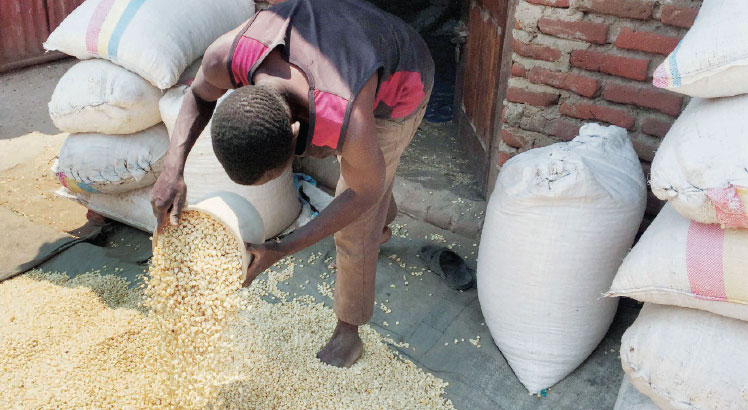Maize prices hold key to food security—Mwapata
Ensuring stability in maize prices throughout the year is key to reducing hunger prevalence in the country brings marginal economic benefits, a Mwapata Institute study has revealed.
Titled ‘Welfare impacts of seasonal maize price fluctuations in Malawi’, the study established that households in the country get their maize from three main sources, namely self-grown, bought from markets and gifts and that the quantities from each source change during the lean and post-harvest periods.

Reads the report: “Our study shows that stabilising maize prices in Malawi would modestly increase the overall economic benefits for the country but have a profound impact on reducing hunger, especially during the lean season.”
The researchers further observed that the changes in prices suggest that there would be opportunities for traders to buy maize at low prices and sell at higher prices later.
However, market failures and unpredictable government policy interventions limit the potential gains accrued from this venture.
It reads: “Government actions, including export regulations and Strategic Grain Reserve [SGR] operations, often worsen maize price volatility. For example, export bans at times of low prices and delayed SGR releases exacerbate hunger and depress prices.”
According to the researchers, a person gets about 7.2 kilogrammes (kg) out of their monthly requirement of nine to 10 kg from their farms during the harvest period while 1.8 to 2.8 kg is bought from the market.
However, the trend changes during the lean season when the amount of maize purchased from markets rises to 6.8 kg. This leads to higher expenditures for consumers who predominantly depend on the markets to secure maize.
Based on our calculation using data on maize prices obtained from the International Food Policy Research Institute (Ifpri) and consumption patterns in the Mwapata study, the average person spends about K106 more on every kg consumed during the peak season.
Reacting to the report, Lilongwe University of Agriculture and Natural Resources agricultural economist Horace Phiri said the study reaffirms a long-held view that the government would benefit from reducing seasonal price fluctuations.
On the interventions government can use to improve stability in the market, he said the government has to be more strategic to ensure that the National Food Reserve Agency (NFRA) and Agricultural Development and Marketing Corporation (Admarc) are used more effectively but did not elaborate further.
Speaking separately, agriculture policy expert Tamani Nkhono Mvula said government is limited with how it can intervene in the market to stabilise prices outside of using its agencies Admarc and NFRA.
But Mwapata Institute research director Levison Chiwaula said initiatives like the maga farms could help stabilise prices if the maize they produce is accessed through Admarc and other large traders.
Over 4.4 million people fce hunger in the country.






I don’t know whether it’s just me or if everybody else encountering problems
with your website. It looks like some of the text within your posts are
running off the screen. Can someone else please comment and let me know if
this is happening to them too? This may be a problem with my browser because I’ve had this happen before.
Appreciate it